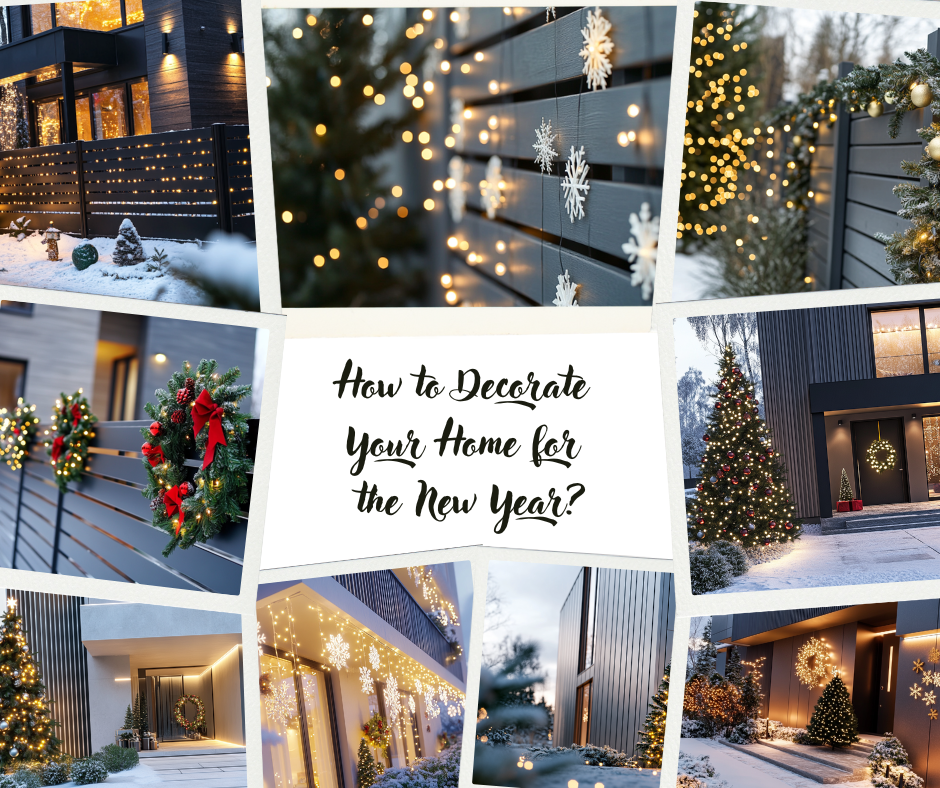Trending Colors in 2023
Important aspect is that trends in the color design of fences and barriers tend to change. Of course, the popularity of certain shades is not as fashion-dependent as in clothing or interior design, but one cannot ignore the dining trends.
Which colors will be the most popular in 2023? Experts almost unanimously assert that the direction will shift towards darker shades:


It’s worth mentioning a trend that has already taken shape — fences in the colors and textures of natural wood. In 2023, the popularity of PRINTECH technology will only grow, so the demand for wood imitation will also increase. This applies to both dark and light shades: for a fence, the contrast of the pattern and harmonious combination of the base tone with the color of the walls and other landscaping elements are important. PRINTECH textures blend perfectly with fences whose construction imitates plank or log fences — “Brus,” “Rancho,” etc.
The main function of any fence and enclosure is to demarcate the area and prevent unauthorized access to private property. However, beyond the functional aspect, any object also has an aesthetic one, which is why the choice of a fence should be made to harmonize with the overall design. And here, everything matters – the material from which the fence is made, its shape, and, of course, the color.
Choosing the color for a fence is not as straightforward as it might seem at first glance. Ideally, entrusting this task to a landscape design specialist is recommended. But if you enjoy doing everything yourself, you should carefully study.
Choosing the color of your fence: tips from landscape designers
General principles of choice
Before selecting the color of the fence, you need to decide which option is more suitable for you:
Both options have their merits, but combining them is not feasible. So, at the first stage, we determine whether we will be looking for vibrant or more natural tones.
Designers provide several basic recommendations to consider:
- The fence or enclosure should be in a unified color palette with the building itself. This does not mean that the fence should be painted in the same colors as the walls/roof – but strong contrast is undesirable.
- Ideally, fences within the same street or cottage community should follow a similar color scheme. This is easiest to achieve with centralized development. However, if you are building fences separately, there is nothing stopping you from coordinating with your neighbors – this way, adjacent fences will look much neater. Tip! If you decide to coordinate, choose colors from the RAL color catalog. Each color corresponds to a specific number, making it easier to find a paint shade that harmonizes perfectly with neighboring fences.
Overly bright, “acid” colors are acceptable only for low fences or specific elements of the fence. If the height of the enclosure exceeds 1–1.5 m, it’s advisable to opt for a more subdued shade for painting.
What to consider?
When choosing a color for your fence, you need to consider its compatibility with other landscape elements first:

Changing color over time
Another factor to consider is the change in color over time. While a wooden fence can be periodically repainted, refreshing a brick or metal fence will be more challenging. So, when choosing a color, it’s important to take potential changes into account:
It’s also important to consider the location of your property. If the fence faces a busy street, making it too light might not be advisable, as such shades are suitable for applying various inscriptions. Therefore, “vandal-resistant” dark tones are usually chosen for such cases.
Ready solutions
The most popular colors in fence design
With the general recommendations becoming clearer, it’s time to get specific. Let’s start by characterizing the features of the most commonly used colors:
Speaking of colors and shades, don’t forget about textures. When facing a fence with decorative tiles or installing profiled sheeting, you can opt for finishes that mimic natural wood or stone. Typically, the most popular shades here are gray and brown, but the actual coating makes the fence nearly ideal from a maintenance perspective. The textured surface is less prone to marks and requires minimal care.
Which color is easier to maintain?
We’ve touched upon surface maintenance questions several times before, but this aspect is worth addressing separately. There’s a notion that dark fences don’t require maintenance at all, but that’s not entirely accurate:
- Fences painted in light shades do indeed get dirty more quickly – any small stain is noticeable on them.
- Contrary to common belief, dirt is equally visible on dark blue or black surfaces. Especially after it dries and becomes light.
- The least conspicuous will be green and brown shades, but even such fences require maintenance.
So, avoiding periodic fence washing entirely is not possible. Therefore, it’s advisable to choose structures with coatings that are easily cleaned with a hose water jet.
Color combinations
Naturally, it’s not necessary to have the entire fence in a single color. Almost always, shades are combined. Here, too, there are several typical solutions:
Conclusion
The right choice of fence color is the key to ensuring that your property looks harmonious. However, in the planning of the design, utilitarian aspects should not be overlooked – therefore, selecting a color for the fence should take into account both its long-term use and its harmonious blend with other elements.











